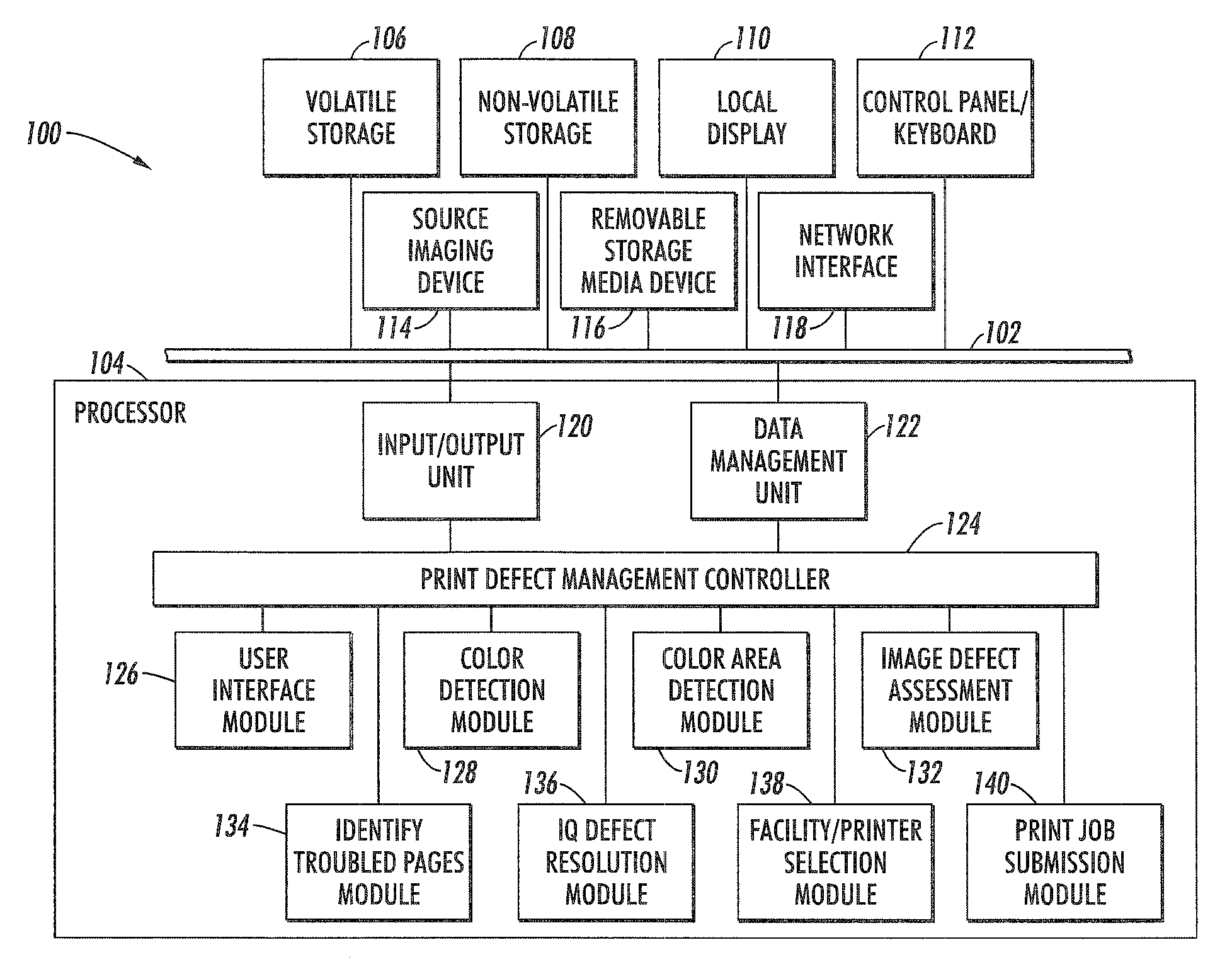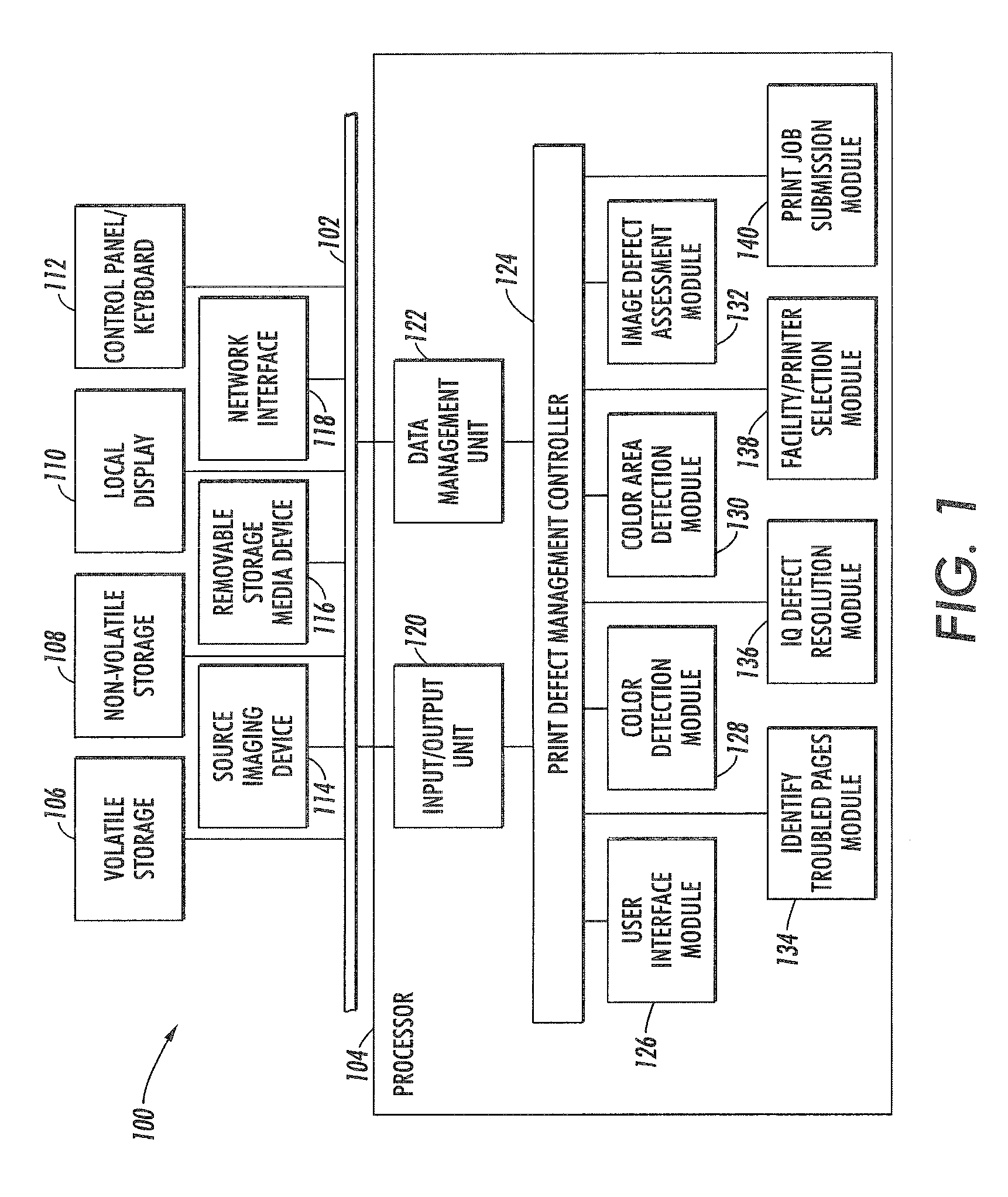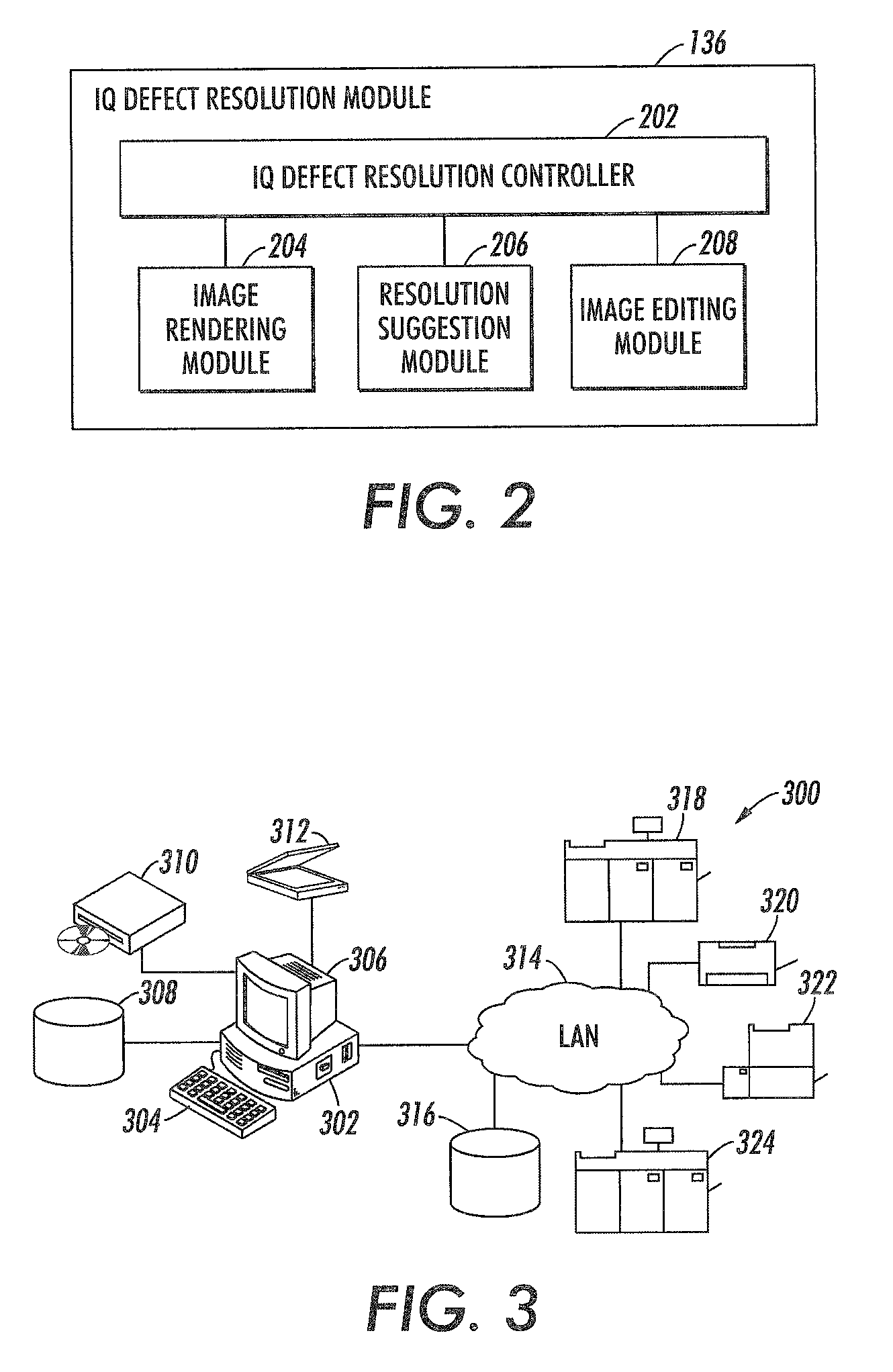Job-specific print defect management
a technology of defect management and job, applied in the direction of digital output to print units, instruments, image enhancement, etc., to achieve the effect of increasing the control of print quality by users, reducing the severity of identified image quality defects, and reducing the number of visible print quality defects
- Summary
- Abstract
- Description
- Claims
- Application Information
AI Technical Summary
Benefits of technology
Problems solved by technology
Method used
Image
Examples
Embodiment Construction
[0027]FIG. 1 is a system level block diagram of an example print defect management device that supports job-specific print defect management. As shown in FIG. 1, a print defect management device 100 that supports job-specific print defect management may include a computer system data bus 102 that allows a processor 104 to communicate with, and exchange information with, hardware components of the print defect management device such as: a volatile memory storage 106, which allows the processor 104 to store program instructions in local memory for execution and to store and maintain temporary data necessary for execution of the stored program instructions; a non-volatile storage 108, such as a hard-drive and / or firmware storage, which allows processor 104 to access and retrieve and / or store bodies of data and program instructions for later use / execution by the processor; a local display 110, which may support a visual interface with a print job manager, or user, who is responsible for...
PUM
 Login to View More
Login to View More Abstract
Description
Claims
Application Information
 Login to View More
Login to View More - R&D
- Intellectual Property
- Life Sciences
- Materials
- Tech Scout
- Unparalleled Data Quality
- Higher Quality Content
- 60% Fewer Hallucinations
Browse by: Latest US Patents, China's latest patents, Technical Efficacy Thesaurus, Application Domain, Technology Topic, Popular Technical Reports.
© 2025 PatSnap. All rights reserved.Legal|Privacy policy|Modern Slavery Act Transparency Statement|Sitemap|About US| Contact US: help@patsnap.com



